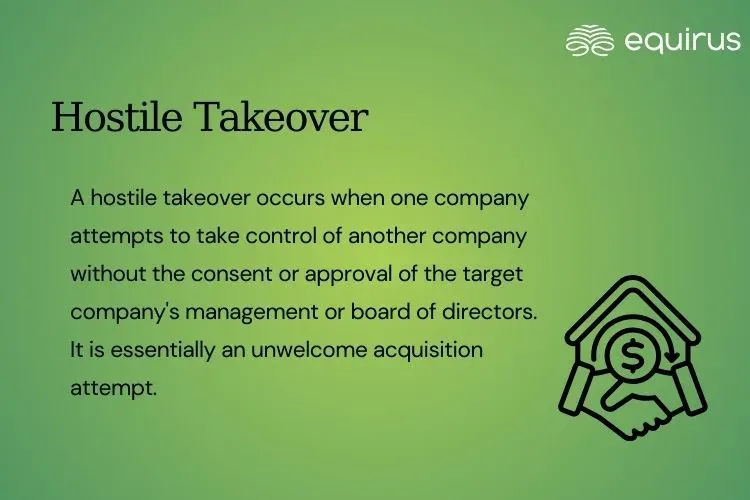Hostile Takeover

Key Highlights
-
A hostile takeover occurs when one company (the acquirer) attempts to take control of another company (the target) without the consent or approval of the target company's management or board of directors.
-
There are two main ways to carry out a hostile takeover, which are, tender offer and proxy fight.
What is Hostile Takeover?
A hostile takeover occurs when one company (the acquirer) attempts to take control of another company (the target) without the consent or approval of the target company's management or board of directors. It is essentially an unwelcome acquisition attempt.
How It Works?
In a typical (friendly) takeover, the acquiring company negotiates with the target's board. In a hostile takeover, the acquirer bypasses management and tries to directly convince shareholders to sell their shares or replace the management.
There are two main ways to carry out a hostile takeover:
-
Tender Offer: The acquirer offers to buy shares directly from shareholders at a premium price.
-
Proxy Fight: The acquirer tries to convince shareholders to vote out the current management and install directors who will approve the deal.
Why Hostile Takeovers Happen?
-
The acquirer believes the target is undervalued or poorly managed
-
To gain strategic assets, market share, or synergies
-
For control of valuable resources, technology, or brand
Real-World Examples
-
Mittal Steel’s takeover of Arcelor (2006) – Initially hostile, but eventually accepted
-
Oracle’s hostile acquisition of PeopleSoft (2005)
In India, such takeovers are less common but L&T’s acquisition of Mindtree (2019) is a notable example
Risks and Implications
-
For the Target: Can lead to instability, employee exits, or negative public perception
-
For the Acquirer: May overpay, face integration issues, or damage reputation
-
For Shareholders: May benefit from a higher share price but face long-term uncertainty
